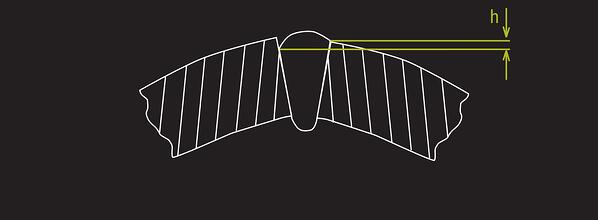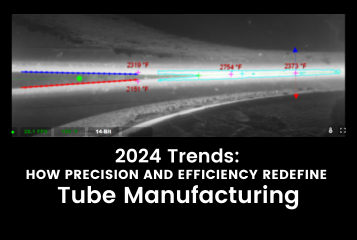Recent advancements in machine vision technology have made a new type of inspection able to see defects related to the forming and welding area of a tube or pipe. The result is improved quality assurance and process control on the production line. The new type of inspection device is a laser-based triangulation system that measures the outside contour of a tube or pipe in the vicinity of its weld.
Typically NDT systems are placed at the end of a production as a final check. However, the laser inspection system can be placed directly after the weld box, This system can let operators know what is changing in their welding process, allowing them to perform corrective action before significant scrap occurs. This capacity is especially helpful for one of the most common defects found mainly in Laser and Plasma welded Tube manufacturing: Weld Bead Undercut.
The Undercut Defect
The undercut defect is primarily a result of laser or plasma welding processes. It may form if the laser beam or plasma arc is too far off center of the ideal welding zone of the tube material. Undercut is actually a non-melted, non-welded area of the bead that can occur on one or both sides of the bead. It looks and behaves like a crack along the bead, creating a very weak point on the tube cross-section. Undercuts are detected as sharp, narrow negative drops in the actual profile (where at least one side of the undercut must have a high deflection derivative, or near vertical slope) that happen close to the edges of the bead. The absolute value of the biggest negative drop found is reported as the height of the undercut.
 The Undercut Defect, where “h” = the height of the defect.
The Undercut Defect, where “h” = the height of the defect.
How the WI-2000 System Measures the Undercut Defect
Xiris Automation Inc. has developed a non-destructive inspection system called the WI-2000 Weld Inspection System. The WI-2000 includes a laser line and a camera whose optical axis is offset to the axis of the laser line by an “offset angle”. The WI-2000 creates a visible cross-section of the tube by projecting the laser line on to the tube and capturing an image of the line using the camera. The resulting image shows a profile of the tube surface as if it were cut in cross section. If a tube is ideally round, the laser image will represent a section of an ellipse and any anomaly such as an Undercut can be mathematically detected.
The WI-2000 bases all of its measurements on the differences between the actual laser profile line seen by the camera, and the ideal mathematical profile based on the tube parameters. By knowing the position of the actual laser profile, the ideal profile, and the size of the pixels in the image, the WI-2000 can detect Undercut profile defects that often escape detection by other quality tools such as Eddy Current testing, or Ultrasonic Testing techniques
Conclusion
A new technique for detecting Undercut on laser or plasma welded Tube and Pipe has been developed by Xiris and is known as the WI-2000 weld inspection system. The WI-2000 system is a laser based inspection system that is capable of detecting Undercut defects immediately after welding to alert the operator of a defect in time to minimize rejects. The result is improved quality, fewer field defects and a more reliable method for the operator to optimize the welding process.
To learn more about Xiris weld inspections systems, request a consultation with one of our experts.
Stay up to date by following us on social media or subscribe to our blog!







